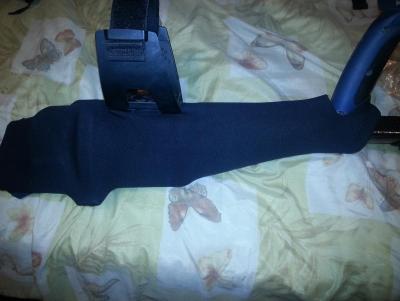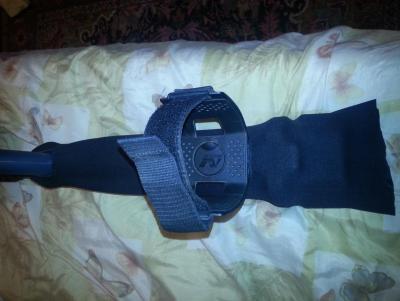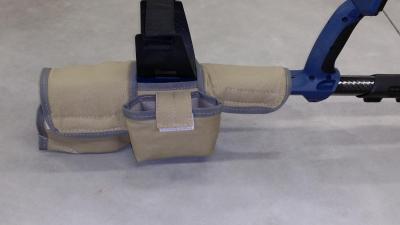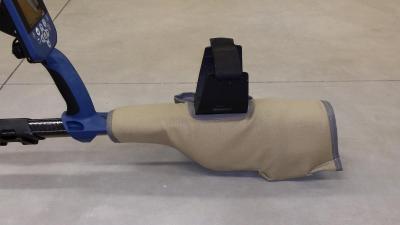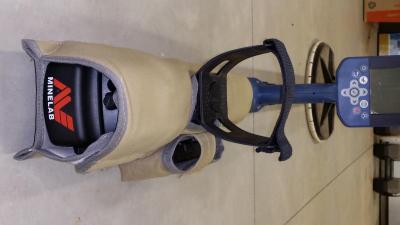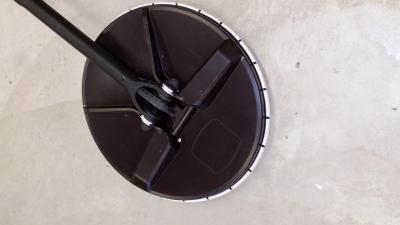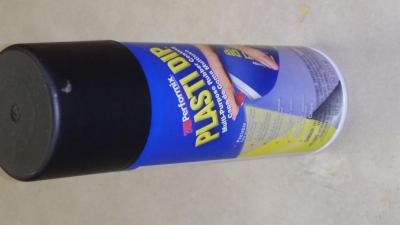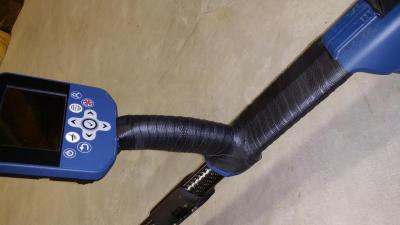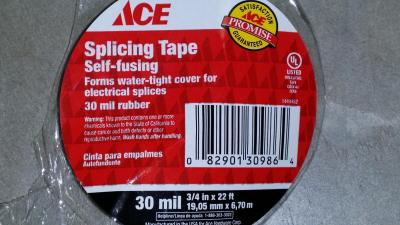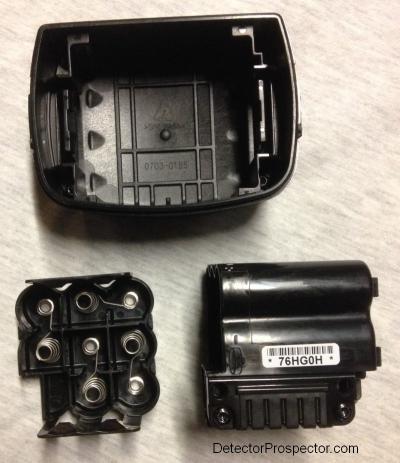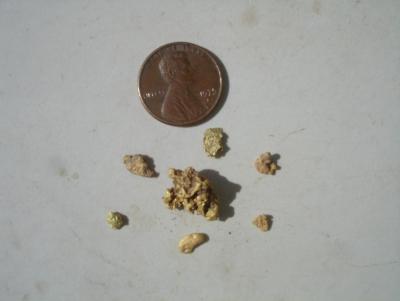Search the Community
Showing results for tags 'minelab gpz 7000'.
-
This is not a technical paper by a technical genius. My smarts tend to be in the practical application of metal detector technology in the field. I am less concerned by the theory at work under the hood than the actual detecting characteristics revealed in actual use. I would very much welcome smarter people than I pointing out any obvious technical inaccuracies below! It has been clearly stated that the GPZ 7000 is not a pulse induction metal detector. Yet it sounds and acts deceptively like previous Minelab pulse induction models, just enough to get people into trouble. I think it is people who are expert with Minelab pulse induction detectors that are having a harder time adjusting to the GPZ 7000. My background comes far more from the VLF side of things. VLF is a misnomer, because it means Very Low Frequency, and was originally nothing more than a subset of induction balance or transmit/receive (TR) detectors. From http://www.vlf.it/frequency/bands.html ULF ultralow frequency 300Hz to 3000Hz VLF very low frequency 3kHz to 30kHz LF low frequency 30kHz to 300kHz Thus it can be seen that the White's GMT at 48 kHz and Fisher Gold Bug 2 at 71 kHz are actually LF (Low Frequency ) detectors, not VLF detectors. And a White's V3i running in 2.5 kHz single frequency mode is running in the ULF range. But these days VLF has become a more generic term referring to induction balance detectors in general. I used to always think in terms of Induction Balance and Pulse Induction as the two different methods used for inducing currents into the ground by modern metal detectors. But things are getting more complicated. Most single frequency induction balance detectors use phase shift for ground balance and discrimination, whereas Minelab BBS and FBS multi frequency detectors rely on time constants, blurring the line between time domain pulse induction and frequency domain induction balance. Minelab is addressing that by now referring to all non-pulse induction detectors as Continuous Wave or CW detectors. Pulse induction detectors have a transmit period, and a non-transmit (zero transmit) period. From http://www.minelab.com/__files/f/254716/KBA 24-1 Basics of the GPZ 7000 Technology Zero Voltage Transmission (ZVT).pdf "CW means Continuous Wave and includes all technologies that do not have zero transmit periods (almost all technologies other than PI)." The GPZ 7000 is most definitely not a pulse induction detector in that the detector is always transmitting into the ground. But where a PI measures the time constant of items from the point where the transmit period ends the GPZ measures from the instant where the transmitted field polarity reverses. Again, like with the BBS and FBS detectors Minelab is mixing continuous wave transmission with time domain processing. OK, blah, blah, blah in layman's terms and no doubt not entirely accurate from a technical standpoint. But close enough for me to have an epiphany recently while running the GPZ 7000. It acts like a super VLF detector more than a pulse induction detector. The ground responses, hot rock responses, salt responses, and gold responses are not that different than what I might expect from a mid-frequency VLF detector albeit one that is much, much more powerful. Everything in metal detecting tends to be a trade off or come at a cost. The Minelab SD/GP/GPX series of pulse induction machines were a progression with later models designed to handle salt ground and hot rocks that earlier models could not handle. The problem is when you tune out a salt signal you tune out weak gold signals. When you tune out certain hot rocks, you tune out certain types of gold signals. Savvy operators always knew that by running in older "Normal" modes they would have to deal with more noise and possibly dig more hot rocks but they could also find gold that more aggressive timings missed. When I run the GPZ 7000 from a purely operational standpoint it acts and feels like a super VLF and basically that is what it is, with a transmission mode that leaves the ground with less ground signal to deal with than that generated by a high power pulse, employing an advanced coil design, and advanced ground balancing algorithms to deal with ground mineralization while still deriving the extra power and sensitivity inherent in continuous wave detectors. I am curious where Bruce Candy's head was when he came up with the ZVT concept, but it appears to me to derive more from the BBS and FBS line of thinking than being something related to the PI machines. The point of all this? Forget about how your PI acts and works and if anything treat the GPZ more like a Super VLF than a pulse induction detector. Certain old VLF tricks work with the GPZ. The main one being - get that coil off the ground!! Saturable Soils Again from http://www.minelab.com/__files/f/254716/KBA 24-1 Basics of the GPZ 7000 Technology Zero Voltage Transmission (ZVT).pdf "The GPZ 7000 coil must be symmetrical about the left‑right axis because ZVT transmitted signals cause a type of signal to be produced from the ground which is absent during PI receiving periods. This ZVT receive signal is from something called soil magnetic hysteresis. If an asymmetrical (un‑symmetric) coil like a Double‑D is used by a ZVT detector (asymmetrical because the transmit coil is on one side and the receive coil on the other), a signal is produced which depends on the speed at which the coil is swept over the ground (and how close the coil is to the ground), and the audio tone will be higher going in one direction (for example left to right), and lower when sweeping in the other direction, which would clearly be unacceptable." The text goes on to say the Super D coil design is employed to avoid this problem. A better word than avoid may have been reduce. The issue has been reduced but not totally avoided. Have you run into it yet? The GPZ producing a rising high tone as you swing one direction, and a descending low tone as you swing the other direction? Another less flattering way of thinking about it is that the GPZ moans and groans as you swing. This is the common response over salt or alkali ground. The intensity depends on the amount of salt in the ground but also on the speed at which the coil is swept over the ground and how close the coil is to the ground. The solution might include changing gold or ground modes of course. But irregardless of that one obvious solution of to simply slow down and keep a very constant swing speed. This will moderate the effect and still allow nugget signals to stand out. The less obvious solution and one that many people will have a very hard time accepting is - raise the coil. Many VLF detectors will overload on bad ground and the simple answer is to raise the coil to eliminate the overload. This is counter-intuitive to people who always scrub the ground with the coil. How can raising the coil add depth? It can and it will if the electronics are being swamped with excessive receive signal. Once again from http://www.minelab.com/__files/f/254716/KBA 24-1 Basics of the GPZ 7000 Technology Zero Voltage Transmission (ZVT).pdf "In any of the above settings, it pays to swing the coil an inch or so above the soil surface if the soils are considered saturable (VRM). Saturable means that a detector ground balances well if the coil is raised and lowered down to about a few centimetres above the soil surface, and for the worst saturation, down to several centimetres, but not if the coil is swung up and down to a height lower than these saturation ‘height thresholds’ (e.g. down to the soil surface.) In addition, the degree of (VRM) soil saturation is considerably less for Difficult or Severe than Normal. As the metal detector coil is moved towards a soil, the transmitted magnetic field in the soil gets stronger. This causes a (very) small degree of VRM signal ‘saturation’ that happens to cause the resistive signal relative slope of the tilt to change. This is why the amount of VRM soil saturation is far less for Difficult and Severe than Normal. Soil saturation often requires the user to operate the coil several centimetres above the soil surface for best results. However, whilst soils do have resistive signal that are very accurately log‑linear, unfortunately this is not perfectly accurate for some soils, and, because the GPZ 7000 has such very high sensitivity, even miniscule deviations in the straightness of the line of the log‑linear resistive signal will cause ground noise signals. Severe is less sensitive to these miniscule deviations than Difficult. Whilst the GPZ 7000 does not have a dedicated ‘salt’ detection setting (saline soils), the best Gold Mode setting for salt soils is Extra Deep." Extra Deep is an extra long time constant mode and so is less sensitive to weak signals from both salt ground and small gold. It is the classic metal detecting trade - you cannot get super sensitive to gold without getting sensitive to salt. Machines can totally eliminate salt effects but never think it does not come at a cost in lost gold. The trick is to get the larger stuff, and the tips above are the same you would employ with any hot VLF in an attempt to deal with saturable ground. The simplest one was the one I wanted to highlight because it just goes so much against the grain. Raising your coil above the ground can actually add more depth! None of these solutions is a magic bullet or will totally eliminate the issue on the GPZ 7000. It will succeed to a greater or lesser degree in different locations with different soil conditions.
-
I recently returned from a hunting trip in Nevada, there were other ZEDs and we were all trying to find what worked best for each individual. I found that I could run with auto smoothing off, normal ground, high yield, sensitivity between 12 and 17. I had my threshold down to 20, target signal up to 20 with max at 2. The ZED ran very stable with clear repeatable signals. I let my friends use my machine and they did not like the high threshold pitch that I used. I think that is a personal preference setting. I have a profound hearing loss and the high pitch makes it easier to distinguish real targets from ground noise. Several times, I switched to auto smoothing only to find that the threshold became more unstable. There were several times that I was fooled by ground noises, there were several nuggets I found at depth that others either missed or had mistaken for ground noises. I am not saying that they were missed by the ZEDs, but there were several detectors over a small area. Norm McQ
-
Been thinking how I could make a protective cover for my ZED. So I cut the arm off a old wetsuit I had. And fitted it around the body of the ZED. Kind of crude, but will give it some protection. You have to take the ZED apart to fit it on. I first cut a small slit, just big enough to stretch over the screen. Then stretched the big end of the wetsuit over where the front shaft slides into. Then pulled it back and re-hooked the 2 cable's back up and locked it together. Then cut a slit to slide the armrest back on. Then cut off the excess neoprene near the battery. Should work well enough until I can get a proper made cover.
-
I have been very skeptical of the depth performance of the 7000 in general and certainly of the "up to" 40%. I have pretty much kept my opinion on this off of this forum so as not to fuffle any reathers. Had a mining partner dig out 2dwt @ 18". I dug out 8ozt (5.5ozt net) @ 26" + pine needles and duff. I need a good recipe for boiled crow.
-
FaceBook groups are great venue to share and learn about a specific topic! GPZ 7000 Minelab
-
The wm12 wireless module for the Zed is now available in Australia $330aud. Shouldn't be to long before you get the spare modules on your side of the pond now.
-
A few weeks ago I had this grandiose idea of designing and selling a cover for the new 7000. During this time of working on it and shelling out $, I've learned there are 2 others working on a cover as well. The company I had do the sewing felt it would cost $85/ unit so I gave them the go ahead to make one then decide if I like it, and if they truly could produce them for $85 each. Well after it was done she charged me $110 and said she can't beat that price. So I really don't think I'm going to try to compete with the other guys and produce these. Oh well, at least I have a cover. The back was left open to let heat out. I do have another idea, about producing a real high end cover. It would be a real high quality fit, have a rubber foot sewn to the bottom, have a "tactical/ military" look and quality, a more heavy duty cordura nylon material, just plain "cool". It would also have a velcro removable pouch for the wireless module to be stored- either when in use or for just when its not in use. But it would cost over $200. I know most people would buy the less expensive covers but I'm wondering if there might be a smaller but decent market for this higher end cover? I mean this is a $10,000 machine. I would appreciate your thoughts...
-
Its been a problem with no solution so far. The GPZ 7000 by Minelab is an expensive detector and folks who are out using them daily (or nearly so) in the goldfields are wearing out the coil covers and Minelab has not yet provided any replacements. This is a problem as the coils are quite expensive and replacement coils are not even available either. Guys have been patching up and repairing the old coil covers as best as they could and hoping ML will come out with replacement coil covers soon - but no one really knows when they will be available. Well, private enterprise to the answer - Razorback Coils / Miner John Designs, a third party coil maker, is now selling GPZ 14 inch coil covers. At least now the prospectors who are running the GPZ have an option other than putting a band-aid or some other sorry excuse on the old cover. The new ones by Razorback are supposed to greatly outlast the stock cover and are available here: http://razorbackcoils.webs.com/apps/webstore/products/show/5908106
-
After my first outing with the GPZ I realized this machine is going to look pretty beat up in a few months. I pondered some different ideas to protect the top of the coil like stick on shelving paper or some kind of self adhering protection. I ended up testing a spray on rubber product called Plasti Dip. I first tested it on plastic and wood before blasting it on my precious and expensive new GPZ coil. After multiple coats and letting it dry you have a rubber coating that is pretty durable. When you want to later remove it, it just starts pealing and stretching like balloon rubber as it comes off, and it stays in one piece. Application is a little bit of a pain though. What I did was undo the coil fasteners and suspended the detector from the ceiling with the coil (cover off) sitting on a bench covered with cardboard. I retracted the shaft so the coil wire extended past the shaft knuckle. Then used masking tape over the coil wire where it meets the coil and masking tape over the coil eyelets so there's no build up there. After spraying each coat I had to remove the tape right away, and 30 minutes later re-tape before applying the next coat, for a total of 5 fairly thick coats. It has proven to be quite durable and I will definitely continue to protect my coil with this method. Next time I'll spray it with the white color. Oh..., the nozzle of the spray can wants to clog between coats. Pull it off right after spraying and let it soak in mineral spirits until you need it. The product instantly dissolves in mineral spirits. Another protective product I use is this self fusing rubber splicing tape. The picture is pretty much self explanatory. This product has to be redone more often. The warmer the temp. the more the rubber wants to kind of roll off. I don't know why some of the pics rotate when I attach them.
-
G'day all. I was chatting to a minelab dealer who said that there are several upgrades coming before the end of the year for the Zed (apparently......). He could not say what, but I assume it will be software upgrades. Has anybody else heard about this ??? Cheers BB
-
Well boys, I'm in the club. Had to sell some detectors, dredges and other stuff to get in. But I'm in. I've had it for a few weeks now. I find it super easy to learn. With the help of the others on the forum , the great topics,tips.... The learning curve is real short on the Zed, compared to the gpx 5000 for me. I've found gold on almost every outing. Nothing to write home about, but am very impressed with the Zed. I have found a lead slug about a 1/2 ounce at 24 inches. Was sure hoping it was gold. But it will happen. I am leaving tomorrow to a remote patented placer mine for a week. I have found some nice gold there in the past, with a detector. But it has never seen a Zed yet. So, I am excited to say the least. With the short time I have used the Zed. I have found more gold than my 1st season with the gpx 5000. Plus I am already more comfortable on how to use the settings of the 7000 than I ever was with the 5000. So wish me luck and I will give you all a update when I return.
-
Here is the latest Minelab Treasure Talk blog by JP about GPZ ground balancing details http://www.minelab.com/usa/treasure-talk/my-method-for-ground-balancing-the-gpz-7000
-
Hi all, I have this nagging concern that maybe not every machine is as optimum as say the most "optimum" one. I have spent around 120 hours with the GPZ, and I am very pleased with the small gold it finds, and several 1 gram pieces, to the tune of 38 pieces for a total of 1/2 oz. But I'm not getting the deep targets that some folks are reporting. For example, 2 of the deepest targets have been- a nail at 12" and a 22 casing at 10". I've dug up over a hundred birdshot pellets of all the various sizes and many other pieces of various sized lead trash. I'm very comfortable with the settings I'm using which are consistent with what others on this forum are using, and I've been very diligent about removing inches of soil when unsure if I have a true target or not. The main settings I use are Normal ground, High Yield and Audio Smoothing off, but I mix up the Sensitivity settings and re-hunt productive locations after making changes to see if I might do better. I do follow the ground balance procedures and Re-set Noise cancel recommendations that have been much talked about here and from other GPZ owners. With this machine I have hit 3 locations that produced 5 or so nuggets in relatively close proximity, sort of "mini" patches. It's really hard for me to believe there aren't some deeper targets in these spots that I'm just not hearing. I have definitely found deeper targets (but not gold) with my beloved and long gone GPX 5000, but I don't think it would have heard most of the gold I have found with the 7000. What I'd like to learn from other GPZ owners is, how many "deep" targets you've been digging? A few, quite a few, lots?
-
Have a video on Audio Smoothing up on the Minelab YouTube channel for those interested. Hope this helps JP Prior thread in subject
-
The rechargeable battery for the Minelab CTX 3030 is a 7.2V 34Wh unit that will also work on the GPZ 7000 and run it for about 4 hours. I have a CTX 3030 and have used the battery on my GPZ with no problems at all. The CTX 3030 also comes with a backup system designed to use 8 AA batteries http://www.minelab.com/emea/products/consumer/accessories/batteries/replaceable-battery-pack I wondered if this would work at all on the GPZ 7000. I put eight fully charged Duracell 2400mAh NiMH rechargeables in the battery holder and tried it on my GPZ 7000. Nothing, it would not power up at all. I then tried eight new Energizer alkaline batteries. Still nothing. Finally, I tried eight new Energizer Ultimate Lithium batteries http://www.energizer.com/batteries/energizer-ultimate-lithium-batteries and still no go. The GPZ would not even flicker. So we know a CTX 3030 will run off eight alkaline batteries but a GPZ 7000 will not. I was hoping if all it did was run an hour at least that would be something. I suppose the battery wizards here can figure a way to pack smaller higher capacity batteries into the adapter but I am leaving that project to somebody else. The 7.2V 34Wh rechargeable battery pack for use with Minelab CTX 3030 is Product Number 3011-0118. It is compatible with the GPZ 7000 and will provide about four hours of running time. It is available for around $149 at various dealers.
-
here are my little nuggies from the Dale-ironstone-district... smallest is 1.4 grains and the biggie(haha) is 43.8 grains==2.84 grams.... Total of 4.03 grams for the trip. Two or three were barely whispers and found where someone else had dug a bit and probably decided it was ground noise. The biggest was a very firm signal and I expected a bullet. However, it was 6 or 8 inches deep. I was thrilled to find something deep-ish and multi-gram... My settings and audio input was varied. Lunk, Russ, Doc and especially Jonathan's settings gave me a firm foundation to build on. There is no doubt this detector will find the goodies-but-you already know that. My first trip to Gold Basin I felt there were some intermittant problems with the audio, especially when using headphones or trying to use Jp's enhancer and speakers ( system that I love)...so I did some intensive testing. On this trip I used three sets of phones, Jonathan Porter's Enhancer and just the module. All of the jacks in the Module gave broken-up signals. Headphones directly in the detector worked fine. Fortunely the Module worked pretty well...I donot understand why this GPZ module has to be in constant visual contact to work well-the ctx is not so handicapped. I wonder if anyone else has experienced these problems...or am I cursed? This will be the second part i have a problem with-not including the first gpz Minelab so kindly replaced...The first was the 12v charger that came apart the third time I used it...
-
I noticed the screen on the GPZ collects dust at a rapid rate. Rubbing the screen with one's finger will only scratch the screen... my solution is a small square of micro-fiber cloth. I carry it in my right rear pocket and use it. It is very effective with a gentle brushing. Costco sells these microfiber by the bundle and one cloth will make four or more... The ctx also does this but coin digging is not as dusty it seems.... fred
-
So I've tried this a few times and every time it's ended up being trash, but this time it was a good one. Of course I lost patience by this point after a few days of trying and didn't go through the whole routine and test a ton of settings like I had been doing but I still got a few in for reference. But I ran over in HY, General, Extra Deep. And then Normal and Difficult in High Yield. After about 2:30 it's just some futzing around digging (and trying out my new pinpointer) so if you want to see what the nugget looked like for potential geometric type reference then you can skip all that junk and go to the end. I'm really not sure how all the previous PI's missed this one, it wasn't too incredibly deep, right out in the open next to a very potholed dig area, and it seemed like a typical slugo nugget. One side had a flat face though if that mattered, and one side was spongy-ish. It went almost exactly 10 grams after soaking in CLR.
-
I took delivery of my Zed this morning and firstly would like to thank the shop for not only having it assembled and charged ready to go, it was also fitted with a full cover on the screen/keypad, a pad on the armrest and a full cover for the main box/battery. This was followed up by 30mins of instruction on how to start it up, pair the remote speaker then work through the menus and the functions. Good service still exists in this world Spent the day getting the hang of it, pulled lots of very small lead shot from a patch that I had cleaned up with the 5000 and a small coil so the gold is only a matter of time and perseverance. Last target of the day was interesting, the target noise was very warbly and it reminded me of fine wire. Here's a vid of the signal, see if you can determine what came out of the hole?
-
We'll make a few assumptions. Hot ground in the US is generally not the same as hot ground in AU. So we're here in USA, no particular EMI and you're purring along in your favorite ZED settings. You come to some hot ground, let's say red clay with a smattering of hot rocks or more likely "cold rocks" that is the rocks that tend to make the threshold go null then wang the audio when the threshold tries to catch up. The ground is causing your machine to get all twitchy and you can no longer hear the subtle threshold changes for faint targets. In this situation, which one adjustment would you reach for first? Lower the gain/sensitivity, raise the smoothing, switch timings etc..?




